#historyofthebook
Photo
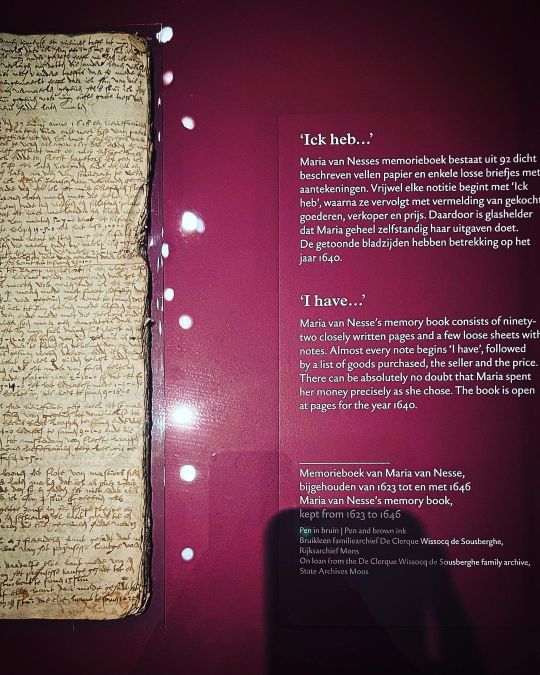
Books in Museums I: The Memory Book of Maria van Nesse “Rich and Independent: Maria van Nesse (1588-1650)” is a small but very well-curated exhibition currently on at the Stedelijk Museum in Alkmaar, Netherlands, and at the heart of it is a unique “memoriebook” belonging to a seventeenth century woman. Maria van Nesse was an incredibly wealthy woman in seventeenth-century Alkmaar. She was a Roman Catholic in a Protestant town, unmarried and completely in control of her finances. And she kept a “memorieboek” which was a diary and account book where she recorded details of every purchase she made. The “memorieboek”, which was discovered in 2019 in a family archive in Belgium, helps reconstruct van Nesse’s life and times in Alkmaar during the period which it covers, from 1623 to 1646. This exhibition was such a delight to explore. Using this rare book, the exhibition brought to life the domestic affairs and social world of an extraordinary woman from the early modern age. #bookstagram #booksondisplay #bookdisplay #oldbooks #historicbooks #oldbooksmell #memorybook #accountbook #bookkeeping #journaling #earlymodern #womeninhistory #dutchhistory #netherlands #alkmaar #stedelijkmuseum #museums #europeanhistory #womenshistory #historyofthebook #booklovers #womenwhowrite #mariavannesse (at Stedelijk Museum Alkmaar) https://www.instagram.com/p/CnxVRbVLaa9/?igshid=NGJjMDIxMWI=
#bookstagram#booksondisplay#bookdisplay#oldbooks#historicbooks#oldbooksmell#memorybook#accountbook#bookkeeping#journaling#earlymodern#womeninhistory#dutchhistory#netherlands#alkmaar#stedelijkmuseum#museums#europeanhistory#womenshistory#historyofthebook#booklovers#womenwhowrite#mariavannesse
0 notes
Text
Harmonia Macrocosmica or Atlas Universalis Et Novus
This post was written by Natasha Skorupski, a Department of Classics Intern in Archives & Special Collections for the Spring of 2022.
Archives & Special Collections at the University of Pittsburgh holds many rare books and printed materials. During my internship with the Hillman library and the Classics Department, I came across an interesting book: Harmonia Macrocosmica or Atlas Universalis Et Novus created by Andreas Cellarius and published in 1708. However, it was not the words or even the illustrations that interested me; instead I was taken by how the book was printed. The images and texts seemed to be printed on one page and then that page was bound to another.


(Above) If you look very closely you can see a faded line parallel to the final bordering black line. The faded line marks where the page, containing the colored print and illustrations, is adhered to the blank page that is part of the bound book.
For hours I searched trying to figure out the name and more about this process. Eventually I came upon a small bit of information. Tip in (or tipping-in) printing is when a printed sheet is inserted into a book or manuscript by gluing (or stapling) it to an existing page. However, the printed page is not part of the book’s binding (Glossary of Book Terms). This was exactly what I was looking for, except after discovering this, I could find absolutely nothing directly about its history. From searching many different sources and putting pieces together, I came across this conclusion—the original printed pages were mass produced and then (at least for this manuscript) the illustrations were hand painted in, and the paint looks quite similar to a watercolor based paint.
Having the pages as individual sheets allows for multiple people to be working on the pages at once, and also allows the artist to immediately move to the next page without having to wait around for the paint to dry. Whenever the paint on the page has dried, it can be bound or glued to a bound book. This is a slower process as only one page can be done at a time, and the glue/paste binding the pages together must fully dry before one is able to move onto the next page. While it was hard finding out about the background of these types of books, there were numerous resources on how to paste bookplates and individual pages into a book.
The process of binding pages together is extremely simple and is precisely what you think it would be. There are tiny variations in the process, but I will explain to you the one I found on the website of wood engraver and illustrator Andy English. The materials he used were a bookplate, scrap paper, pencil, small brush (good enough to avoid bristles detaching themselves), glue, a soft cleaning cloth, and a container to mix in (English).
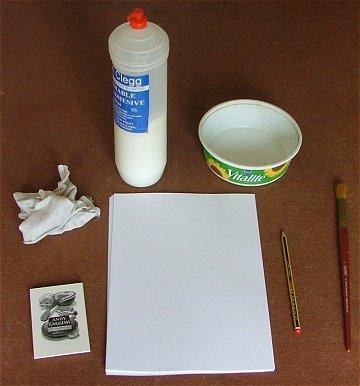
(Above) Image from “Pasting Bookplates into Your Books” by Andy English, 2021.
He recommended PVA (Polyvinyl acetate) glue as it is easily thinned with water, flexible, and acid free. This is important as his mixture is about 60% glue and 40% water, with is mixed in the container. However, he notes that he uses a little less water for paperbacks. Before you start, make sure to wash your hands and keep them clean at all stages. Take the bookplate/page you wish to attach and place it on the book/page where you want it. If you wish, you may mark in faint pencil marks the corners of where the attached page will go. Once the mixture is made, place the bookplate/page face down on a clean piece of scrap paper (photocopy paper is perfect). Take some paste on the brush and (holding the plate firmly with a finger) brush the paste on the bookplate/page from the center going outwards (English).

(Above) Image from “Pasting Bookplates into Your Books” by Andy English, 2021.
It is important not to overload the plate with paste! Once the paste is on, take the bookplate/page and hold it above where you want to place it in the book. Then carefully, but deliberately, place it onto the book and smooth it down. If there is a little too much glue, use a clean cloth (lightly dampen with clean water) to wipe it carefully and use light pressure to avoid damaging the surface of the paper (English).

(Above) Image from “Pasting Bookplates into Your Books” by Andy English, 2021.
Lastly, leave the book open until it has thoroughly dried.
Works Cited
English, Andy. “Pasting Bookplates into Your Books.” Pasting In Your Bookplates, PB Hosts, 2021, https://www.andyenglish.com/pasting-in-your-bookplates.
“Glossary of Book Terms.” AbeBooks, AbeBooks, 28 Mar. 2022, https://www.abebooks.com/books/rarebooks/collecting-guide/understanding-rare-books/glossary.shtml#T.
13 notes
·
View notes
Photo
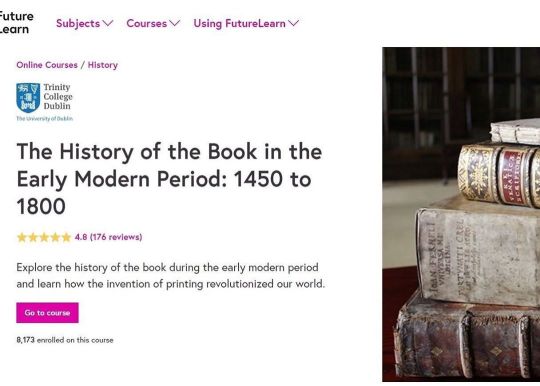
Last week’s blog post was about a course that I’ve just finished on @futurelearn - The History of the Book in the Early Modern Period 1450-1800. I thoroughly enjoyed it and I’m excited to start my next course on The History of Royal Fashion 😁 #FutureLearn #OnlineLearning #OnlineCourse #HistoryoftheBook #HistoryGirls #TudorBlogger #HistoryBlog #NewBlogPost #Bookstagram #LockdownLearning https://www.instagram.com/p/CF4B6LlHdFQ/?igshid=1ivyh78z4a0sk
#futurelearn#onlinelearning#onlinecourse#historyofthebook#historygirls#tudorblogger#historyblog#newblogpost#bookstagram#lockdownlearning
1 note
·
View note
Photo

The Birth of the Puffins Double Crown Club dinner, February 1938. Allen Lane was invited to talk, & defend, his new series of paperbacks at the DCC dinner of Feb 24. 1939, which apparently he did very successfully, despite protests from the old school printers. Noel Carrington was also there, and impressed, and met with Lane shortly afterwards to discuss a Penguin on Design. It was then that Carrington approached Lane with the idea of a series of inexpensive books in colour. Lane jumped at the prospect, and the rest, as they say, is history. Here’s the menu from that dinner, and a trial (Green) copy of that first ever Penguin. from 1935. #birthofthepuffins #penguinbooks @penguincollsoc @finepreserversbooks @theironbridgebookshop #doublecrownclub #historyofthebook @penguinukbooks https://www.instagram.com/p/BtSsj5hA3R7/?utm_source=ig_tumblr_share&igshid=18c950vr59o71
3 notes
·
View notes
Video
Throwback images of the first book project made at ISIA of Urbino (PU, IT) 🍓 Back then, I’ve designed and printed these two versions of the book Brieve racconto di tutte le radici, di tutte le erbe e di tutti i frutti che crudi o cotti in Italia si mangiano by Giacomo Castelvetro (XIV century) for the course History of the Book, with professor Luciano Perondi, and Typography for Illustration, with professor Mauro Bubbico 🥬
*someveryoldstuff*
.
.
.
.
.
.
2016 - 2017,
book design / indian ink, gouache, pen, pencils and collage on paper,
15 x 23 cm (each) / 30 x 23 cm (each).
https://www.instagram.com/p/COLi4_3h0JK/?utm_source=ig_web_copy_link
#Illustration#GraphicDesign#book design#book layout#editorialillustration#historyofthebook#Typography#typographyforillustration#maurobubbico#lucianoperondi#isiaurbino#isiaurbinoillustrazione#giacomocastelvetro#diario di bordo#diary#food#vegetables#fruit#recipes#curiosity#childhood memories#children#nature#traditional illustration#traditional art#Black and White#pomegranate#colours#perpetuafont#throwback
0 notes
Photo

"A place like the Library Company is a bibliographer’s paradise.“
Dr. John Garcia, Library Company fellow and an Assistant Professor of English at California State University, talks about his research at the Library Company on the LCP blog. Read here.
#LCPFellowFridays
#BensLibrary#DrJohnGarcia#ResearchFellowship#LCPFellowFridays#LCPfellow#AmericanHistory#HistoryoftheBook#SpecialCollections#Tumblarians#CriticalBibliography#Bibliography
13 notes
·
View notes
Photo
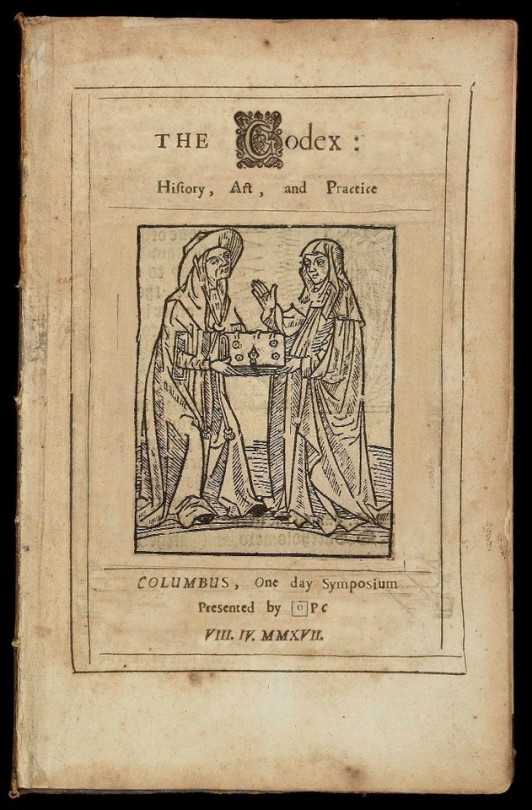
The Codex: History, Art, and Practice
August 4th, 2017, 9:00 a.m. - 4:00 p.m.
A full day symposium in celebration of the Codex, highlighting the history and art of bookbinding with panel discussions, concurrent talks, and hands-on learning.
Featuring:
· Keynote speaker, Julia Miller
· Panel discussion with Macy Chadwick, Bonnie Mak, and James Reid-Cunningham
· 2 concurrent sessions
Register at http://opc.wildapricot.org/event-2498417
Sponsored by the Ohio Preservation Council & The State Library of Ohio at The Jessing Center, 7625 N High St, Columbus, OH 43235
19 notes
·
View notes
Text
I was tagged by @notatypicaldimension to fill this out! Thanks for thinking of me Noodles!
Any of mutuals who want to participate, do it and tag me. I love reading these almost as much as I love doing them 💕
Nicknames:
Some of my friends (and my husband on occasion) call me Beef; my coworkers call me Warrior Princess. The duality of man.
Real name:
Beth
Zodiac Sign:
Sagittarius
Favorite Musicians/groups:
I go through phases; recently I've been listening to Joseph and Maggie Rogers a good bit. Some constants are Mumford & Sons, Twenty One Pilots, and The Oh Hellos.
Favorite sports team:
I gotta support Auburn football and supporting the Tampa Bay Buccaneers is in my DNA, but I'm not a huge sports person in general.
Other blogs:
I have a blog I made for a class called bethlingerfelt-historyofthebook, but it's basically inactive since I only needed it for a semester. It was a digital common book project or something like that where I was supposed to colocate materials that related to our class.
Do I get asks:
When I reblog Ask Games I do! There's several mutuals out there who are real kind to indulge me when I share those 💕
How many blogs I follow:
157
Tumblr crushes:
None
Lucky number:
I don't really have a lucky number, but my dad always sees 747 and points it out every time, so now I notice when I see it too.
What I am wearing:
Light blue Ann Taylor chinos, a white floral print shirt, brown flats, and a blue knit cardigan to keep warm in my office.
Dream vacation:
Scotland/England
Dream car:
I'd love a hybrid or more eco-friendly car. I'm not huge about Elon Musk, but a Tesla would be cool too.
Favorite food:
Tacoooooos
Drink of choice:
Day to day I usually just drink water. If I'm at a get-together I go for sweet tea. For a treat at coffee shops, I'll get an iced dirty chai.
Instruments:
I took piano off and on for like 12 years, but i never practiced so I'm not great. I picked up a little bit of ukulele in High School.
Languages:
English. I took French in High School and College but I'm probably just at an elementary reading level MAYBE.
Celebrity crushes:
Heath Ledger always. Oh and Milo Ventimiglia.
2 notes
·
View notes
Photo
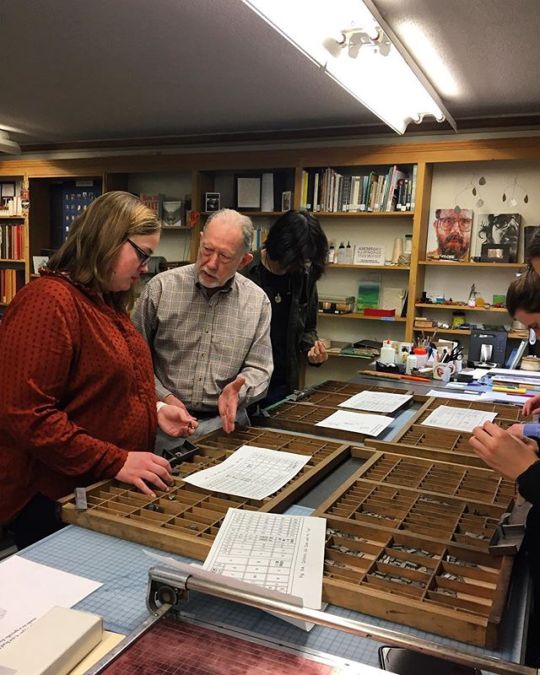
We’re setting type in History of the Book class this morning. #zsrspecial #historyofthebook #typesetting — view on Instagram http://bit.ly/2V2LpoC
9 notes
·
View notes
Link
It’s not Bookilla chapter 7, but here’s a short academic paper I did about translating it! This was my contribution to a university course blog.
2 notes
·
View notes
Photo
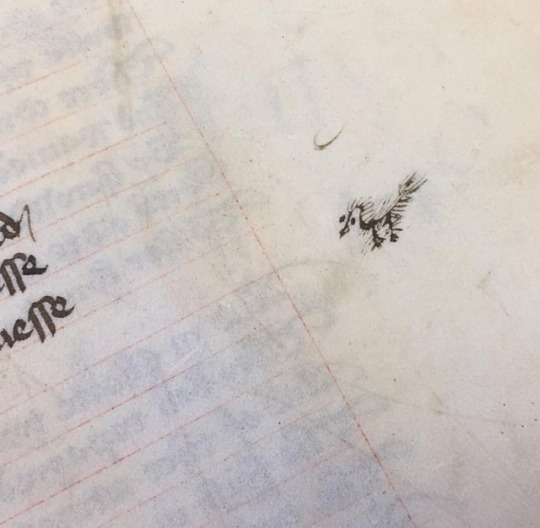
We've heard of marginalia, but might this doodler have known a Corra? . . . #Repost @uofgcodicologist ・・・ Another late night post for me this week, all because of a lot of deadlines for things that will (hopefully) let me do more research on this gloriously scruffy manuscript! Swipe through to discover one of my favourite marginal annotations which - considering this MS is STUFFED with #doodles on almost every page - is saying something! This is @uofglasgowasc MS Hunter 232 (U.3.5), a medieval MS of Lydgate's poem "The Life of Our Lady" which has been extensively annotated by early modern owners. Pen trials, marginal notes, even children's doodles fill the blank parchment of this otherwise quite plain religious MS. Most bear no relation to the text. How much do you love the expression of this marginal duck? I think this wee chap deserves a name - any suggestions? #doodles #duck #medievalduck #margins #marginalia #marginalannotations #earlymodernmarginalia #lydgate #manuscriptstudies #bookhistory #historyofthebook #annotations #uofglasgow #uofglibrary #iglibraries #specialcollections #archives #archivesofinstagram #libraries #librariesofinstagram #bookstagram #manuscripts #books #bookhistory #bookart #medieval #earlymodern #medievalmanuscripts #rarebooks #explorearchives #archivesunlocked
#bookstagram#archivesofinstagram#archivesunlocked#margins#earlymodern#rarebooks#explorearchives#bookart#uofglasgow#marginalia#lydgate#specialcollections#archives#librariesofinstagram#medieval#medievalduck#bookhistory#uofglibrary#duck#manuscripts#medievalmanuscripts#manuscriptstudies#historyofthebook#books#marginalannotations#annotations#libraries#doodles#earlymodernmarginalia#iglibraries
0 notes
Text
May 2nd, 2016 The last entry
This will be my final blog entry for my class, The history of the book. As far as classes go, this has been the funnest and probably most insightful class I have ever taken. Senior level classes are usually marked as stressful endeavors, marred with sleepless nights and tension. But this class was not so...It artfully blended collegiate work with artisanship. As far as the book goes my definition of what a book is has changed, and within that statement, a power message is said. “My definition of the book”... If anything I think this class has taught me the lesson of perspective in relation to personal meaning. The book means something different for everyone, and oddly enough it’s emotionally tied to our conscious. Dr. Beebe, you have done such an excellent job with this class. It’s difficult to know whether an experimental class will succeed or fall flat on its face; but I think it’s safe to say this classes succeeded and met all it’s goals. I write this blog and hour before going into the last time I will meet my fellow classmates, and I want to say to you all... Thank you... Thank you for the wonderful discussions we had, and I hope you all enjoyed the class as much as I did.
Seth Raven
1 note
·
View note
Text
The Function of a Book: Readers and Collectors
Special Collections welcomed Will Rhodes’ ENGLIT1125 Masterpieces of Renaissance Literature on Wednesday, March 15th. Students had the opportunity to examine facsimiles of Renaissance literature and poetry; fine press and private press editions of literature and poetry; and historical texts dating back to the Renaissance. Students worked closely with these materials and completed an in-class assignment to create a short essay. Professor Rhodes selected a handful of these essays for us to feature on the Special Collections Tumblr. We hope that you enjoy!
What is the purpose of a book? Well, to be read of course! But is that always true? While the contents of a book may never change, even down to the style of font it is published in in various editions, the purpose of the book may change. Special Collections houses many facsimiles, or exact copies, and modern editions of older books. I will compare one facsimile and one Renaissance book in order to show how a book is transformed from an object with a practical function to an object meant to be collected.
Purchas His Pilgrimage, or Relations of the World, Samuel Purchas, 1614

This book is an encyclopedic work, which describes various religions, their practices, and briefly about the nation from which they originate. Samuel Purchas was a well-educated Anglican priest, who, despite the extent of his works, never left England. In fact, he collected this knowledge from the stories of sailors and the manuscripts of past travelers. One might wonder why 17th century Christians would be interested in the traditions of other cultures. This is clearly answered on the title page.
Under the author’s name is the phrase “Unus Deus, Una Veritas,” meaning “One God, One Truth.” Therefore, these descriptions of other cultures represent what is false in the world. In an era where Europe is exploring and missioning to these places it would make sense to try and understand the culture of the native people. Purchas calls this his “pilgrimage.” This book therefore has a religious function. It is not a literal journey but a metaphoric journey around the world. The knowledge gained on this journey could allow others to better conduct their mission work in these countries.
But the book also functions to justify the growing authority of Christianity in these places. In one description of religious practice in China, the author writes that when people “obtain not their requests [to the Gods], they will whip and beat these Gods.” It is clear that these people do not understand the reverence and proper worship that Europeans do. This likely pleased, the Archbishop of Canterbury George Abbot, to whom the dedicatory epistle is written.
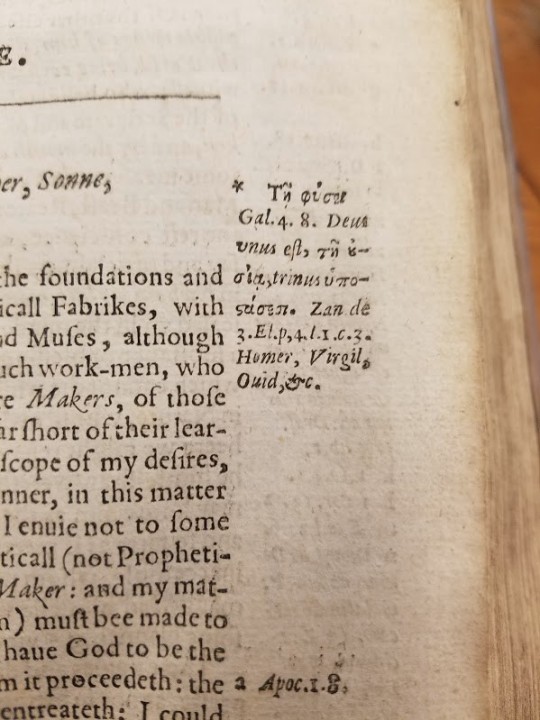
Another indication of its intended use by the clergy is the numerous printed notes in the margin. These often give evidence for what has been written or more avenues for research. The notes may be in Latin, Greek, or English, which implies the reader must have had the education to understand these annotations. The clergy would have learned Greek to read some of the oldest versions of the Bible and Latin for most church documents up until the reformation.
Essayes- Religious Meditations- Places of Perswasion and Disswasion, Francis Bacon, Originally Published 1597, Haslewood Edition: 1924
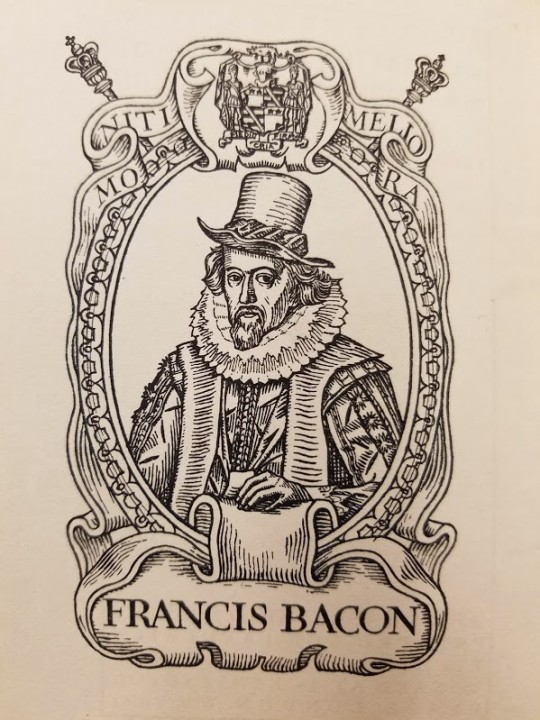
This collection of writings from philosopher and scientist Francis Bacon covers a wide variety of topics from a “regiment of health” to “atheism.” I am most interested in the middle text of the three works included in this book. It is called the “Meditationes Sacrae” or “Sacred Meditations.” This work is completely in Latin despite the other texts of this book being in English. Bacon must have had a sense that for anyone to take you seriously when writing about religious matters you had to write in Latin. In these short meditations he discusses common religious concerns such as the nature of Christ’s miracles and controversies between Church and scripture. This was likely regarded as a useful and edifying book in its time.
While one could make some interesting points about how Bacon’s logical scientific method influenced his religious beliefs, the fact that a facsimile was published more than three hundred years after it was originally published raises equally interesting ideas. While the book says it is an exact copy, “page for page and line for line,” of the first edition octavo this is not quite true. The note in the front of the book reveals that the outdated “f” has been replaced with the modern “s.” The frontispiece, shown above, is also redrawn from a different work of Bacon’s. It is also interesting that the editor’s note points out that this version is not the most well known, because Bacon continued to add to and edit these essays for many years.
This book is neither the text that made it famous nor a totally accurate copy of the original so perhaps the purpose is not for it to be read but to be collected. Part of the challenge and fun of collecting is the rarity of the object. For instance, you could go to a comic book store and buy any new comic and there’s no challenge there. But if you want issue #134 of Superman’s Pal Jimmy Olsen to complete your collection of Jack Kirby comics it’s a lot harder. So the publisher has created this sort of challenge by limiting the number of copies printed. This book had a run of only 975 books.
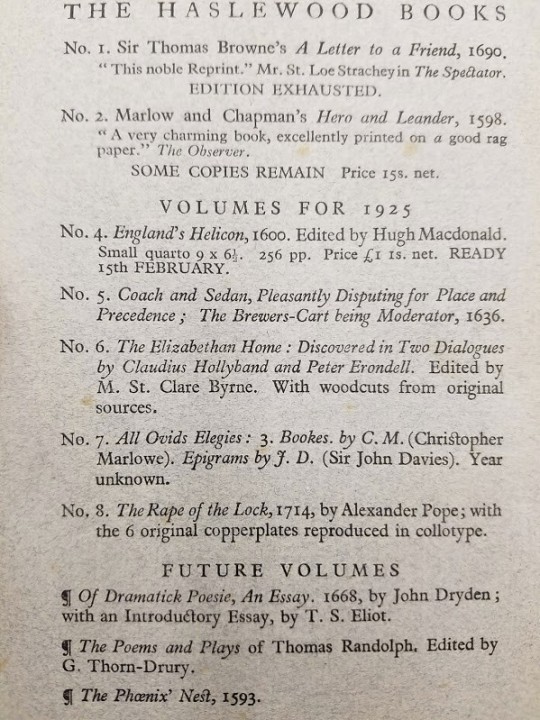
Artist and architect Frederick Etchells founded Haslewood Press, the publisher of this book. This explains why this book is an object of aesthetic value. It was printed on all cotton paper with a deckled edge that gives the appearance of the paper being handmade. The top edge is gilt. It is these small details that make the book more beautiful almost to the point that it does not matter which classic work of literature it is. The back of this book is an advertisement for other books from this publisher. To promote the collecting of this series it announces that their copies of the first book have been “exhausted” and that only “some copies remain” of the second. Also interesting, is a review of one book, which describes the contents as “charming” but the printing to be “excellent” on “good rag paper.” A list of the upcoming books with their unique features is also included. These details further convey that in the case of these reprints, it seems more important to have a beautiful library of famous books than to be particularly invested in the contents of the book.
-Mark Connor, University of Pittsburgh undergraduate
#books#bookhistory#bookstudies#historyofthebook#bibliophile#bibliography#samuel purchas#religion#francis bacon#scpittclasses
24 notes
·
View notes
Photo
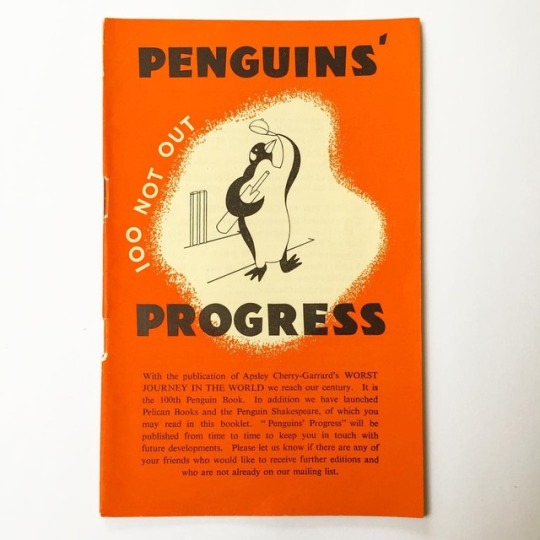
100 Not Out Penguin Books a booklet from April 1937 celebrating the arrival of Penguin no 100, which in fact was a double volume (99 & 100) The Worst Journey in The World (still in print). The booklet also announces two new series ... Pelican Books, and Penguin Shakespeare. For those who wish to make their Penguins last a little longer you could also buy special cloth reading cases! #penguinbooks @penguinukbooks @theironbridgebookshop @finepreserversbooks @penguincollsoc #historyofthebook #pelicanbooks #readingcases #cricket #100notout
7 notes
·
View notes
Text
#6 Head Start

For a good while, society considered the 1990′s generation as the kids on the brink of a digital revolution. We were heralded as the first generation of a bright new era. All of our technological innovations and advances would put us on the forefront of the future. The problem? Society miscalculated by about ten years. What was “the future” when I was a child was garbage in just a couple of years as technology and science rapidly improved itself during the silicon wars of the nineties. The generation they should have been focused on all along was this one- the millennials, the children of the 2000′s eras. As Diane Rehm and her esteemed guests discussed on their November 5th podcast last year, these children are the ones who have truly grown up with this technology. The previous generation grew up with the primitive skin and bones of the technology, while the millennial generation got its improved and evolved grandchildren. Many of today’s students are doing e-homework on I-pad apps and laptops as early as 1st grade. This is both exciting and alarming. On one hand students have faster and more accurate access to a much broader array of information. On the other, is it too much, too soon? There are many questions as to the impact on the physical and mental development of this generation. Many fear that the wealth of information available on the internet might be too much for a child’s developing brain to process. How do you explain sex, or genocide, or any of the things you see on CNN to a 4 or 5 year old? The fact of the matter is that we just don’t know what the impact is going to be yet. Society just hasn’t put enough time or resources into researching the matter. If we don’t change this problem, it will change us.
http://thedianerehmshow.org/shows/2015-11-05/new-research-on-teens-toddlers-and-mobile-devices
0 notes
Text
Skin
Human skin is the throne of touch and a protective covering for the body’s deeper tissues. To align the physiology of the book with the human body, the cover of the book – its anterior and posterior shell – most readily recalls the binding properties of derma and the epidermis molded atop the papillary layer of the derma with the attendant medial orifice. The derma and epidermis produce the effect of wholeness, they apply material boundaries to the body and they arrest its contents. Skin holds bodies together; it is the connective tissue that defines the threshold of interior / exterior and it is by opening the skin that we can read what is inside. The critical opening of a book creates functionality; the book does not function without being opened. Skin that is shut restricts our gaze. However, If we open the human body we damage and potentially destroy it. For ourselves, this type of reading is forbidden. Our body as text – with those multiple layers of interpretative possibility – is sealed, contained, hidden, secret. The book requires an invasion, it invites us to fold back its skin.
0 notes